Robert Frank’s magnum opus, The Americans, chronicled the photographer’s journey across the United States between 1955 and 1957 as he sought to capture America in all her glory. Of the 28,000 images he took during this three-year period, a total of only 83 photographs were published in The Americans. Tens of thousands of frames were left out, many of which have remained unseen to the public: now, for the first time, a selection of those rarely seen and unpublished works are on view in a new exhibition at Danziger Gallery, titled Robert Frank—Rarities.
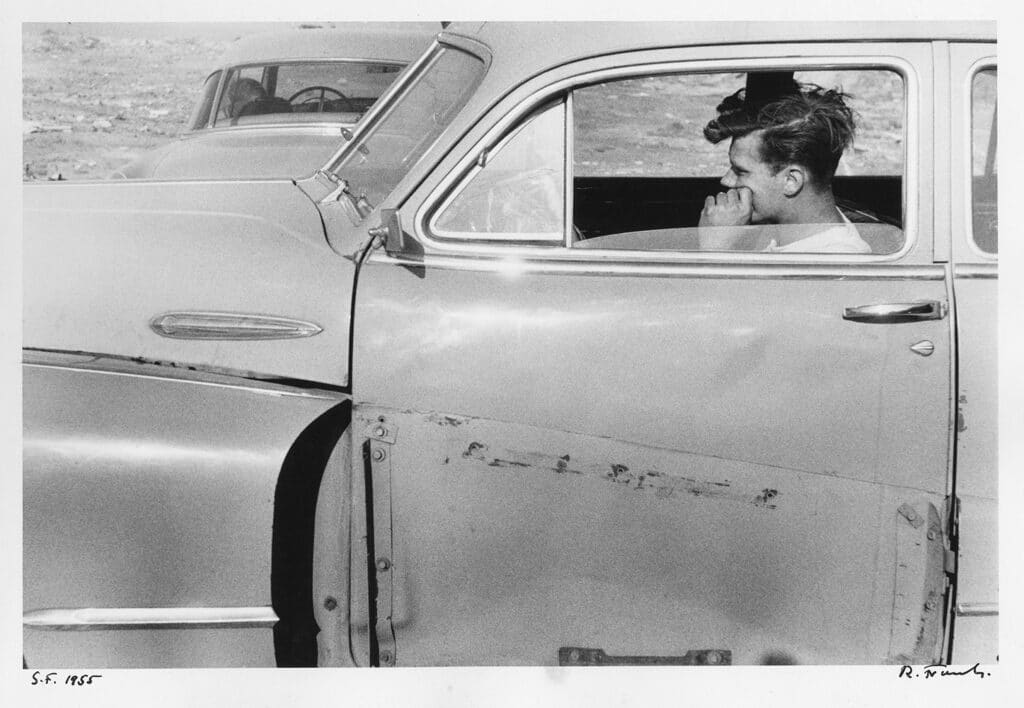
The genesis of The Americans came about when Frank, who had recently emigrated to the United States from his native Switzerland, applied for a Guggenheim Fellowship to travel across the country and document everyday life across big cities and vast expanses of land. As he documented the lives of the so-called ordinary American, he also captured an America that was fleeting, making The Americans a time capsule of the mid-1950s.
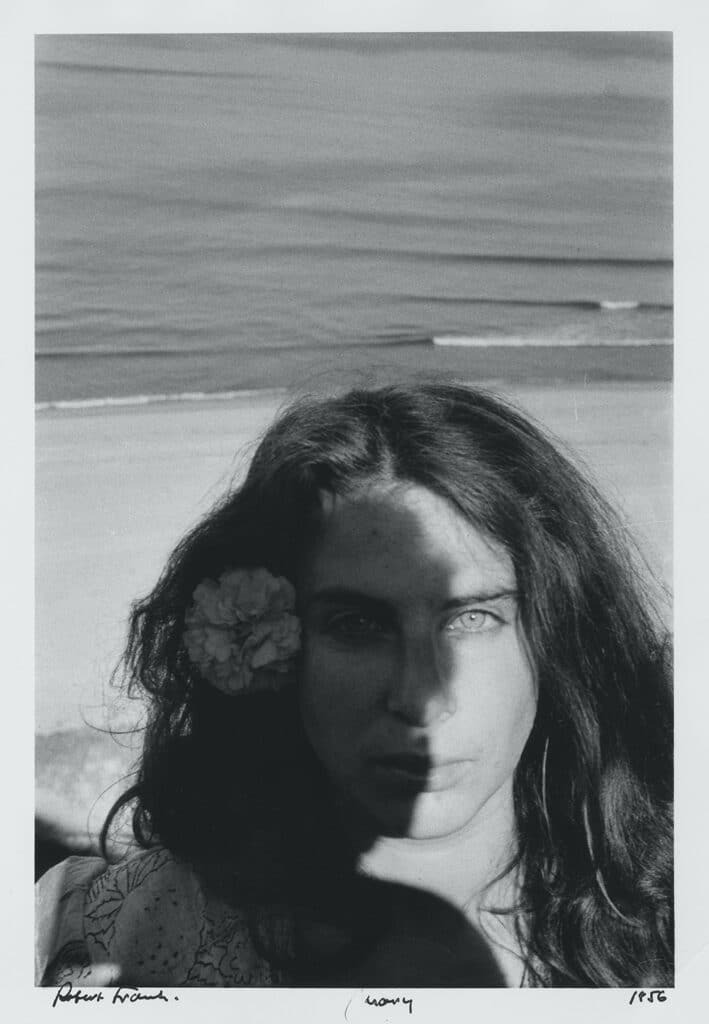
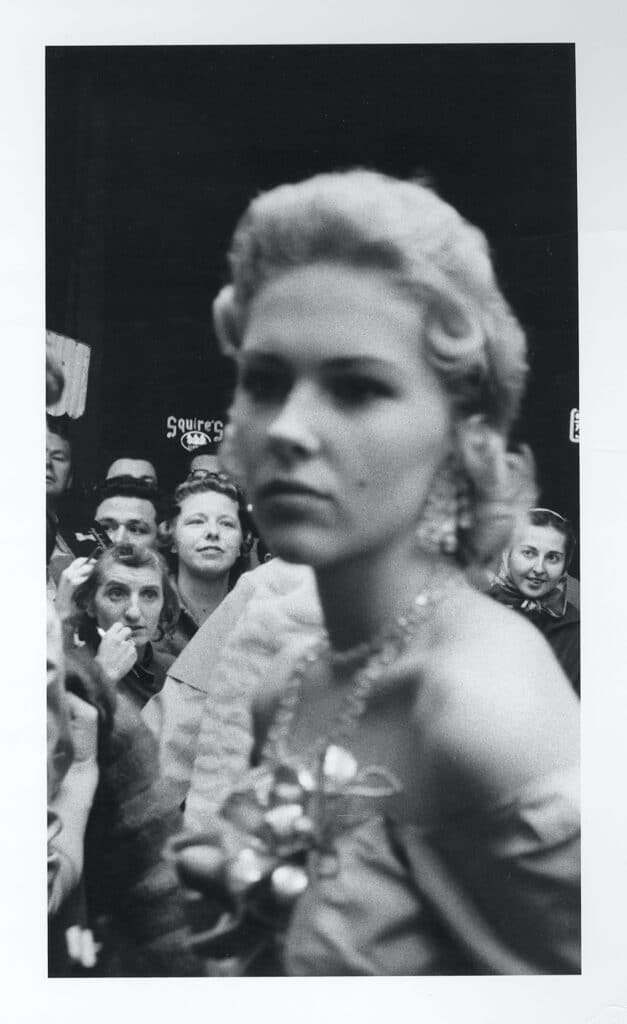
Between the frames he selected for publication and the ones that remained unseen, there’s a melancholic tint to Frank’s photographs from this period. Among the prints shown is Hollywood Premiere, 1955, which shows the glamorous movie star Kim Novak, who, just out of focus, turns away from an exuberant crowd; believing she is out of view, her face falls, revealing her genuine emotion. Another photograph, discreetly captured from a film set in Hollywood, shows actors in costume, apparently waiting for filming to start as they wearily stand around, glamorous but bored. “I think people like the book because it shows what people think about but don’t discuss,” he once said in an interview with The New York Times. “It shows what’s on the edge of their mind.”
Frank’s images revealed an America without façade, showing that life in the Golden Age was not necessarily so luminous. The infamous Beat poet and novelist Jack Kerouac, who wrote the introduction to The Americans, would later say that Frank “sucked a sad poem right out of America onto film, taking rank among the tragic poets of the world.”
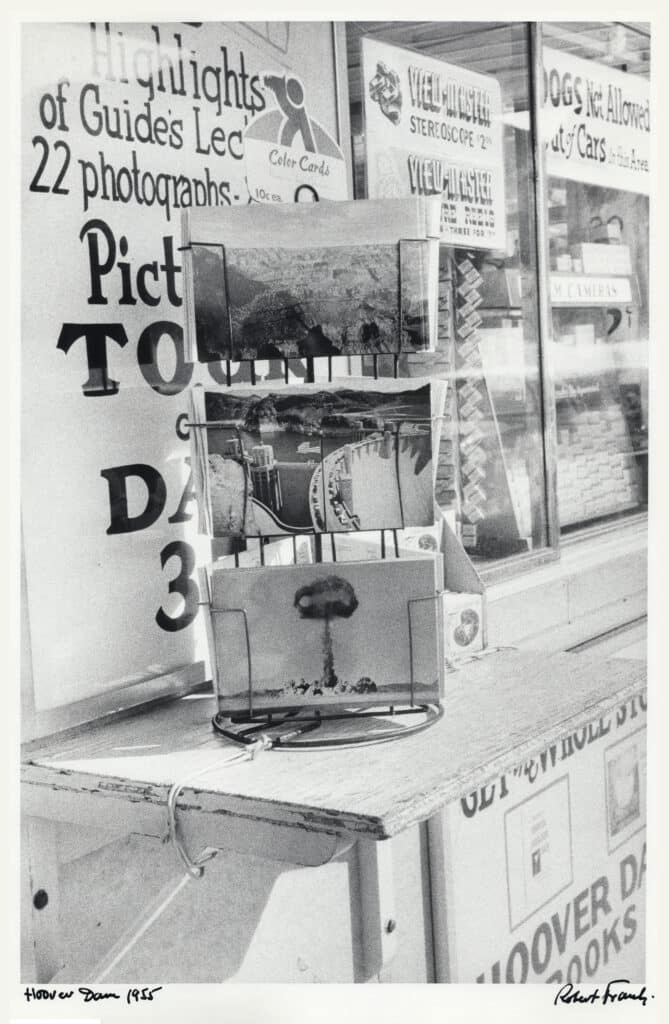
Moments of classic Americana remain: a mural of an American flag, an advertisement for a car, a seemingly endless stretch of a highway. “He found new areas of beauty in those simple, overlooked corners of American life – in diners, or on the street,” writes Sarah Greenough, senior curator of photography at the National Gallery of Art in Washington. “He pioneered a whole new subject matter that we now define as icons: cars, jukeboxes, even the road itself.”
A particularly poignant image in this selection of rarities shows an aging man from behind, clad in an ill-fitting suit and a hat, like a Magritte painting suddenly come to life in black-and-white. He looks out over the field in front of him as a cow grazes in the distance, as if surveying the land one final time, seeing an America that would quickly fade away. Luckily, Frank was there to capture it all.
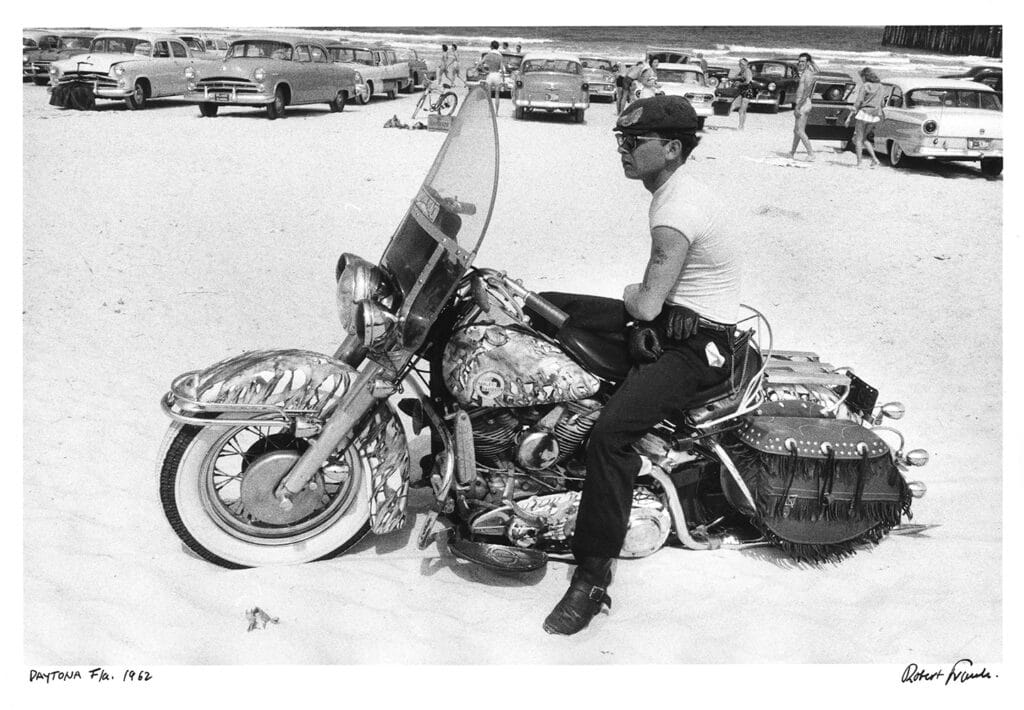
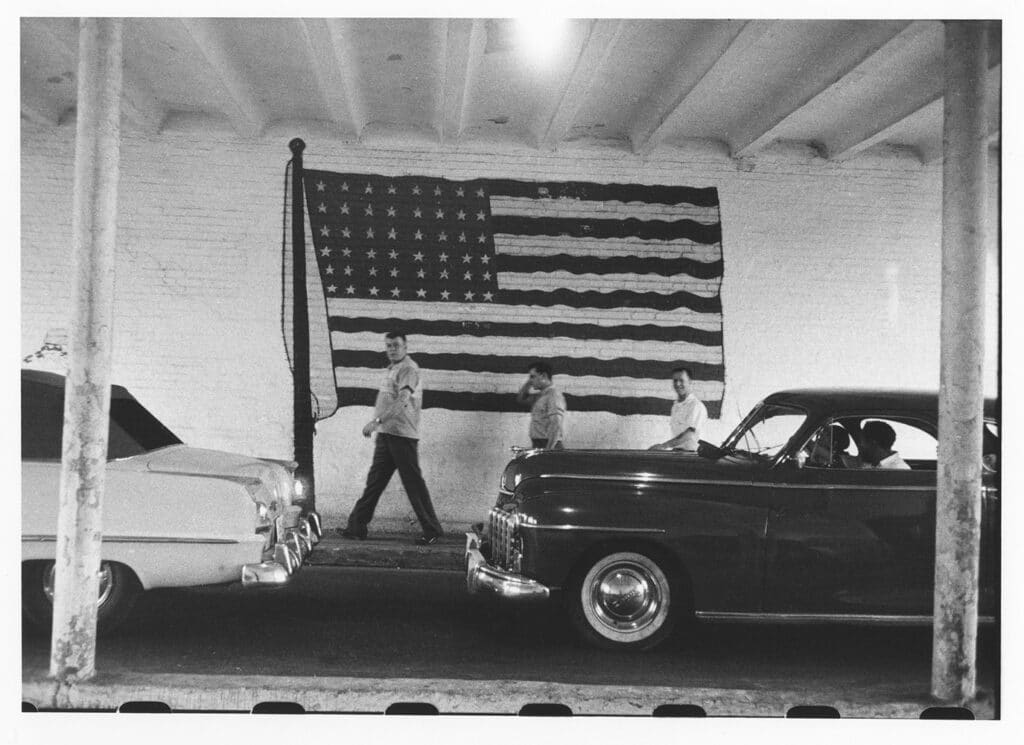
By Christina Cacouris
Christina Cacouris is a writer and curator based in Paris and New York.
Robert Frank—Rarities is on view until April 3, 2021 at Danziger Gallery in Los Angeles. Click on the link to view all unseen images.


